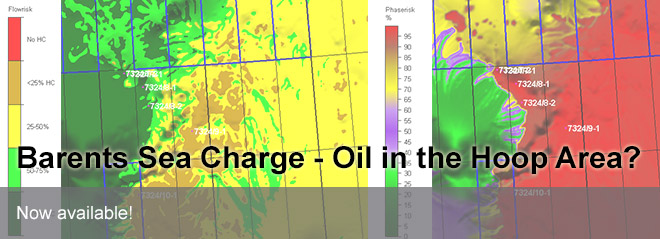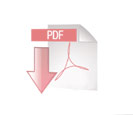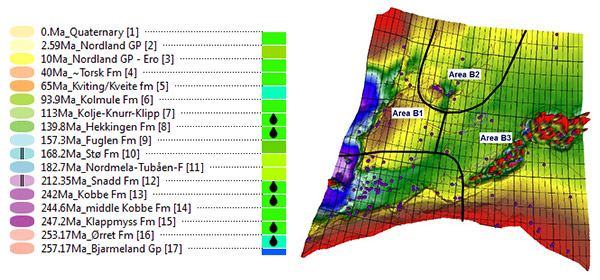Barents Sea Charge – Oil in the Hoop Area?

Migris now offers a hydrocarbon charge study that assesses and ranks the possibilities of finding oil in the 23 round blocks in the Hoop area.
We use the stochastically calibrated Barents Sea Charge Study from 2014 to make predictions on the charge and hydrocarbon phase risks for the 23rd round blocks. From the comprehensive analysis we make a list of the blocks and rank them with respect to their potential for oil.
The basis for the study
In 2014 Migris completed a hydrocarbon maturation, generation, migration, and leakage simulation study of the southern Norwegian Barents Sea. The study was built upon our Migri simulator technology and seismic interpretations from the PGS Barents Sea MegaProject.
Migri enables the evaluations of multiple alternative scenarios and sensitivities. Burial, maturation, generation, migration, and leakage were dynamically modelled through time in each scenario for a full 3-D basin model with 15 stratigraphic layers. Important parameters, such as the amounts of erosion for multiple episodes, temperature gradients through time, lithologies and leakage events were all described with a combination of maps and normal distributions to include uncertainties in the descriptions. The probabilistic approaches used in Migri made it possible to provide estimates of uncertainties in model results by combining results from many Monte Carlo simulation runs.
Probabilistic approach
In our new Hoop-study the stochastic model from the Charge study has been optimized to discoveries in the Hoop area. More than 10.000 simulation runs have been completed for this analysis.
An iterative fine-tuning of the Barents Sea Charge model that used the Hoop area oil and gas column observations as calibration points was used to derive the optimum stochastic charge model for the Hoop area. The lateral resolution is 400m in these simulations.
As part of the updated model we add pseudo well oil column “observations” within the new blocks and use our Riskchart technology to analyze the results. We select the 1000 simulation runs with the minimum error for the calibration points. If 200 of the 1000 runs give oil in a block, then there is a 20% probability that the block will contain oil according to the model. This gives us an “objective” method to rank the blocks with respect to the percentage of oil accumulations in each 23 round block.
High resolution
Key results are available as digital maps and compiled report documents. The results from the sensitivity analysis and probabilistic basin modeling work are available at a lateral resolution of 400 m within the Hoop area. Results from “base case” migration model runs are also available.

Deliverables
A report will be delivered in digital format (PDF/Microsoft Word/PowerPoint documents and 3D animations). The final report highlights the methodology and discusses the hydrocarbon phase risks of the area. Important results are exported as grid files and included as project deliverables. The deliverables from the Barents Sea Charge project, Area B2 are included at no additional costs.
Project database
The database used in the project will not be included as a deliverable. All seismic data and interpretations can be licensed separately from PGS. The underlying complete Migri model (in depth domain) may also be purchased separately.
Project results are offered for purchase from August 2015 onwards. Final deliverable will be September 2015.
For interested oil companies it may also be possible to integrate their own interpretations and compute the resulting charge risks (*).
For further information, contact:
Øyvind Sylta, CEO Migris
sylta@migris.no
+47 926 40 396
PDF leaflet about the study:


